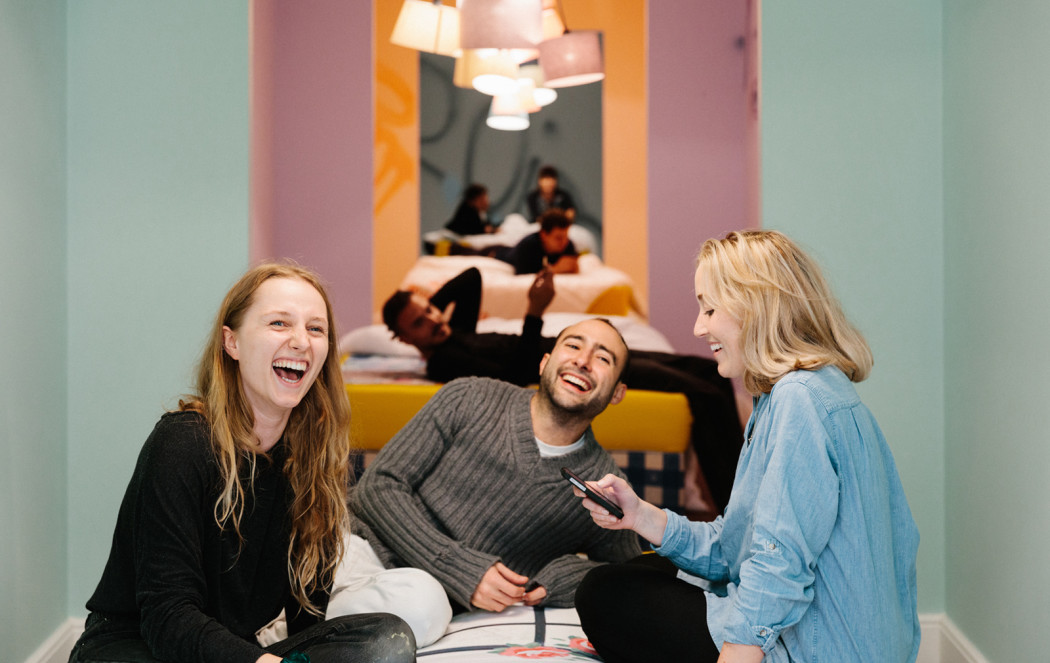
Photography: Lewis Ronald. Courtesy of Lewis Ronald/Frieze
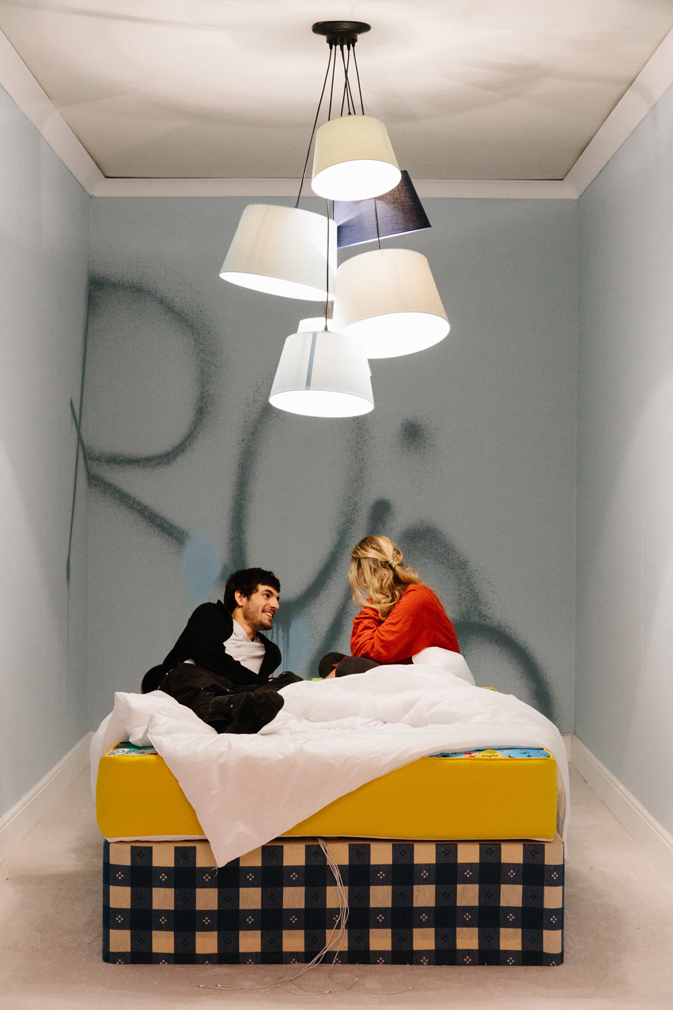
Photography: Lewis Ronald. Courtesy of Lewis Ronald/Frieze
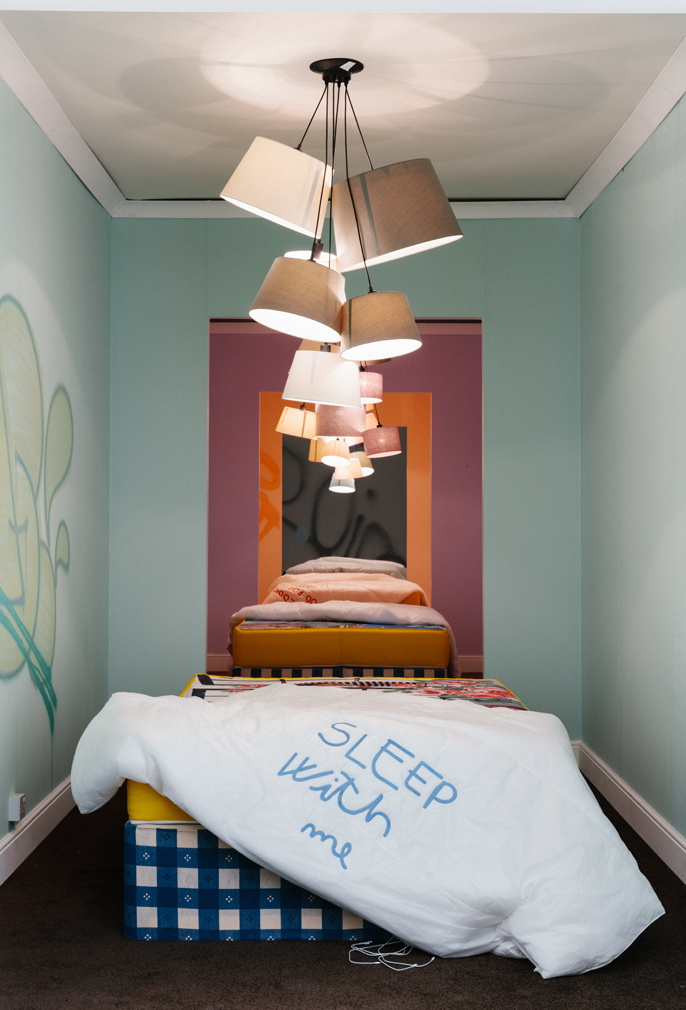
Photography: Lewis Ronald. Courtesy of Lewis Ronald/Frieze
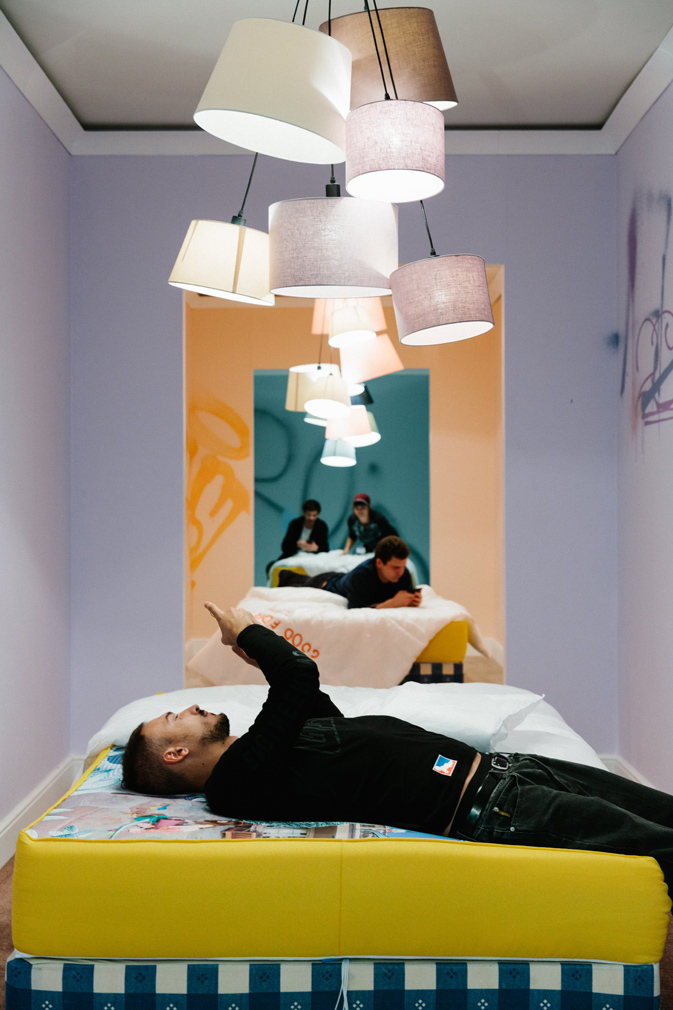
Photography: Lewis Ronald. Courtesy of Lewis Ronald/Frieze
Slotted into the interstitial space between two lobes of the Frieze London tent, the ÅYR collective’s Comfort Zone (2015) is disquieting in its soft-edged, pastel-toned calm.
A linked parade of sherbet-toned bedrooms, strung with gently pulsing domestic lights, it offers visitors to the fair access to mattresses digitally printed with inspirational images. A multitude of phone chargers sprout from their bases.
Early visitors to the fair eyed the installation suspiciously, as though the cosseting environment was a lulling front for sinister goings on beyond. Which indeed it is – albeit on a larger cultural front.
ÅYR’s Fabrizio Ballabio, Alessandro Bava, Luis Ortega Govela, and Octave Perrault have backgrounds in architecture. In Comfort Zone they respond to the muddled atmospherics of the art fair – a heady melding of networking and friendships, creativity and profit, labour and entertainment – as one part in a larger cultural splicing of comfort and production.
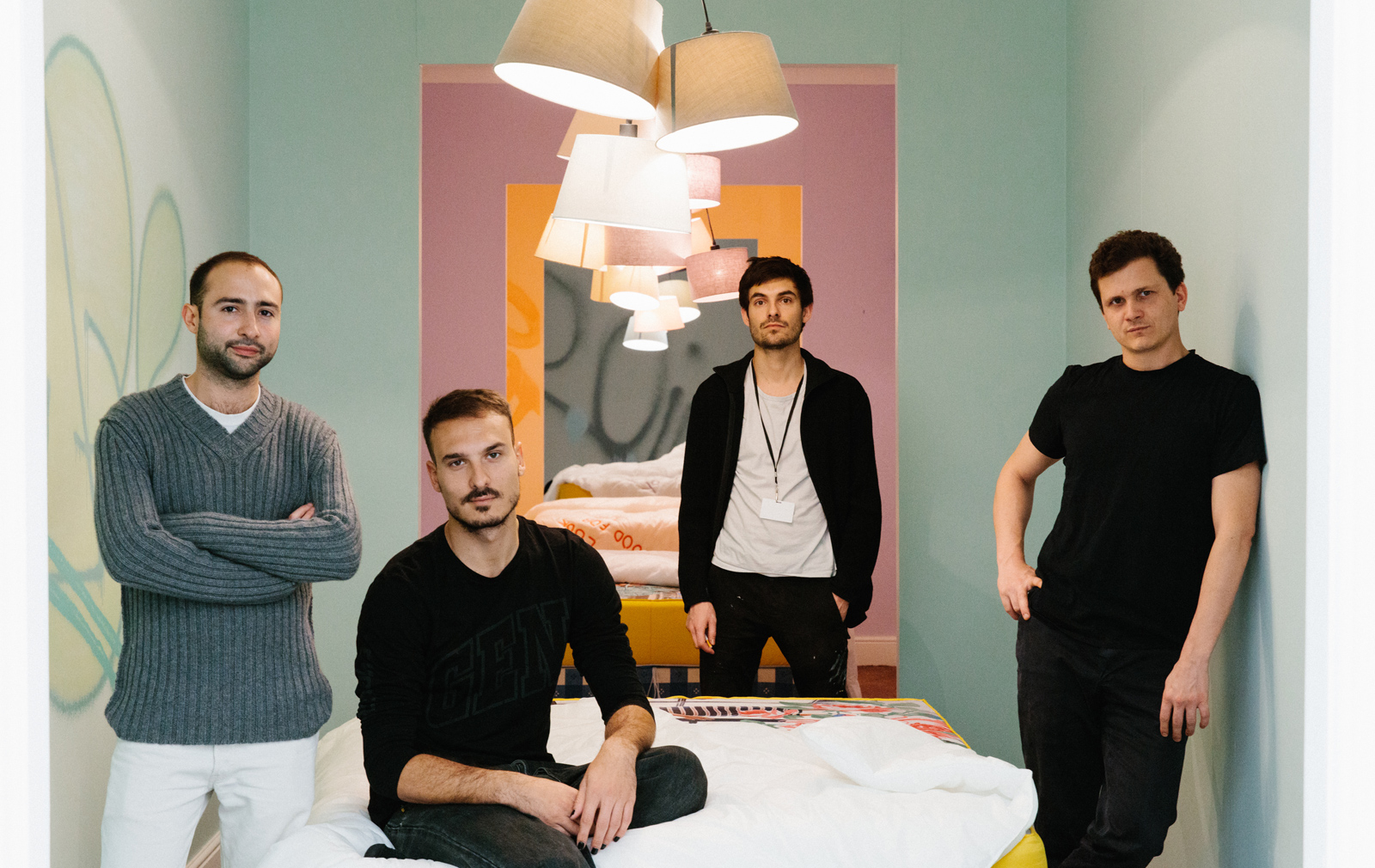
‘The smartphone is changing the nature of the home: using a smartphone in bed makes it a public place from which your data is being mined,’ explains Bava.
ÅYR link the invasion of work-related technology into our private homes not only to the productivity-boosting relaxation zones offered by large modern companies, but also to sharing economies that encourage us to market our private spaces, and by extension our lifestyle and aspects of our personality, as a resource.
As architects, ÅYR pointedly engage with interior spaces and surfaces, noting the impact of social media on the design of the domestic interior.
While on the one hand, the ‘interior is a portrait’, as Perrault points out, it is often such an edited and controlled one that any individuality promoted by house-sharing websites or pinterest translates into a kind of international homogeneity.
While parts of Comfort Zone broadcast their ‘smart’ aspects – the lightbulbs, for example, are hooked up to reflect data streams linked to the fair – ÅYR are unusually retrospective in their use of the word ‘technology’.
‘Structures are invented to regulate things,’ says Govela, offering as example the Baroque’ enfilade as a means of establishing power in privacy. ‘We see every aspect of space as a technology.’























